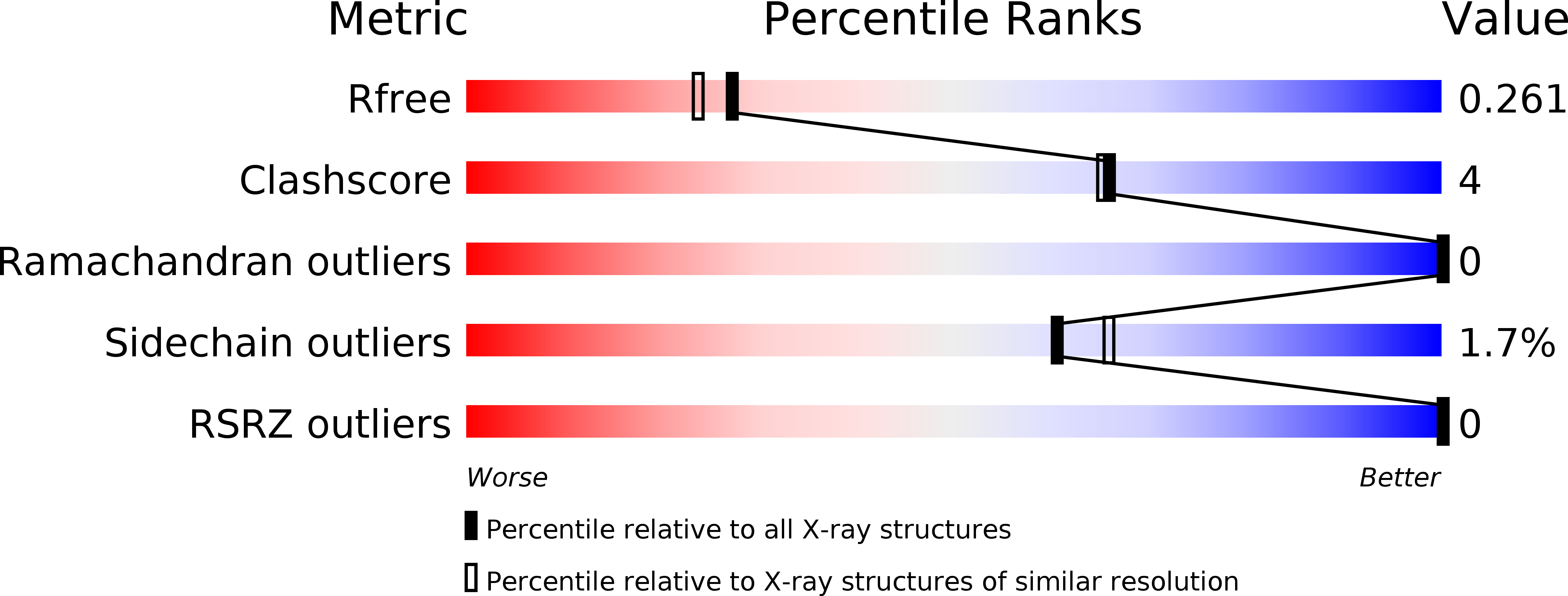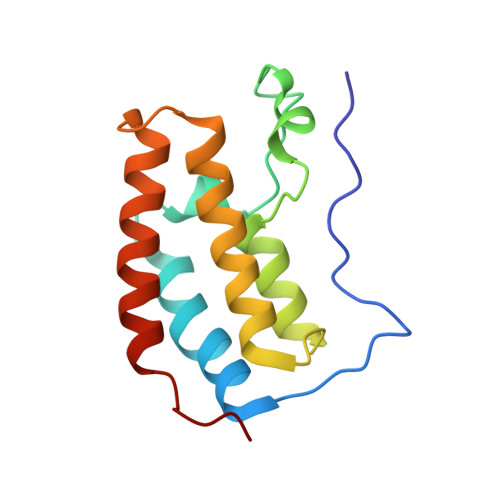Lead optimization and efficacy evaluation of quinazoline-based BET family inhibitors for potential treatment of cancer and inflammatory diseases.
Yang, S.M., Yoshioka, M., Strovel, J.W., Urban, D.J., Hu, X., Hall, M.D., Jadhav, A., Maloney, D.J.(2019) Bioorg Med Chem Lett 29: 1220-1226
- PubMed: 30905542
- DOI: https://doi.org/10.1016/j.bmcl.2019.03.014
- Primary Citation of Related Structures:
6MAU - PubMed Abstract:
Extensive optimization of quinazoline-based lead 8 is described. The structure-activity relationship studies indicate the S-configuration is preferred for the phenylmorpholine substitution. Together with incorporation of a (2-hydroxyl-2-methylpropyl)pyrazole moiety at the 2-position leads to analogs with comparable potency and marked improvement in the pharmacokinetic profile over our previously reported lead compounds. Further in vivo efficacy studies in Kasumi-1 xenograft mouse model demonstrates that the selected inhibitors are well tolerated and highly efficacious in the inhibition of tumor growth. Additionally, the representative analog 19 also demonstrated significant improvement of arthritis severity in a collagen-induced arthritis (CIA) mouse model. These results indicate potential use of these quinazoline-based BET inhibitors for treatment of cancer and inflammatory diseases. A brief discussion of the co-crystallized structure of 19 with BRD4 (BD1) is also highlighted.
Organizational Affiliation:
National Center for Advancing Translational Sciences, National Institutes of Health, 9800 Medical Center Drive, Rockville, MD 20850, United States. Electronic address: [email protected].
















